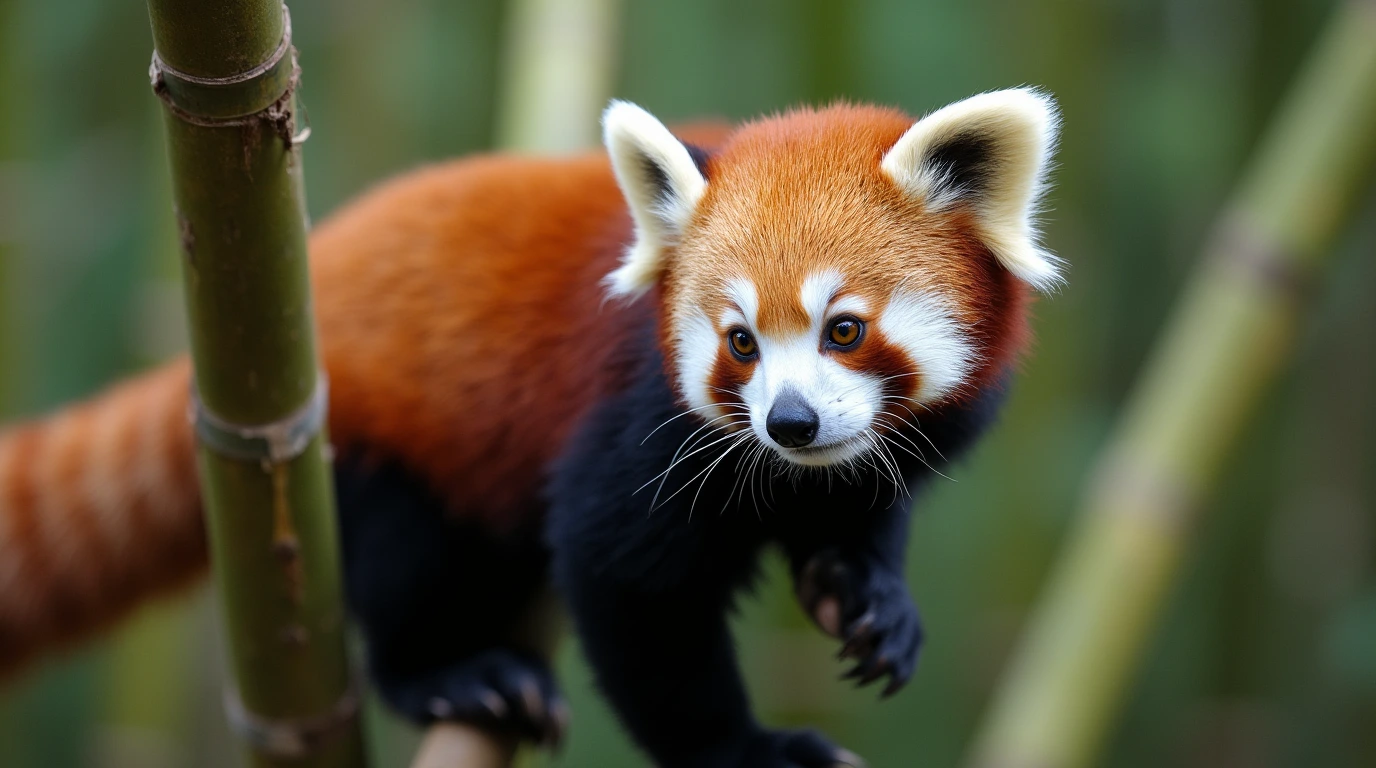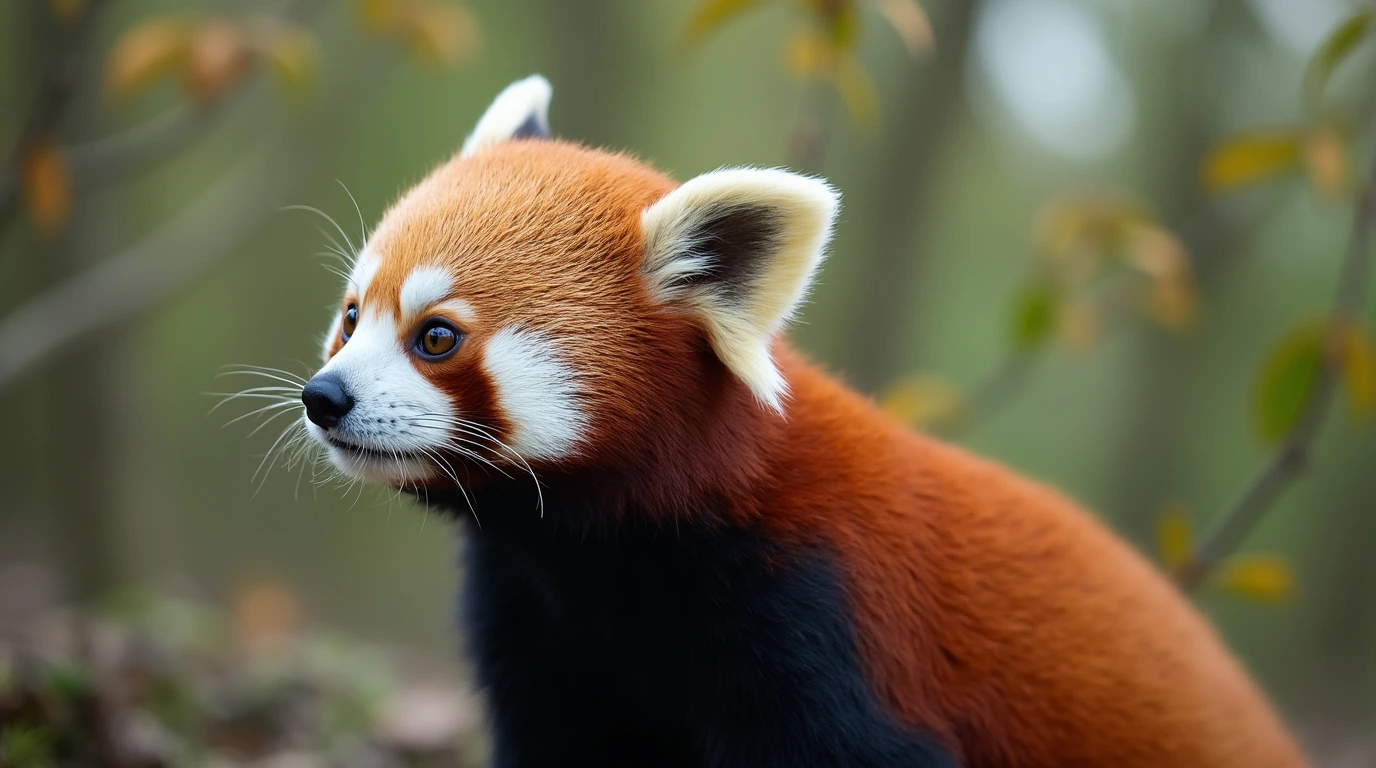Red pandas have a fascinating daily routine shaped by their environment, diet, and survival instincts. Unlike many other mammals, they are not strictly nocturnal or diurnal but instead follow a crepuscular activity cycle, meaning they are most active at dawn and dusk. However, their behavior can change depending on factors like temperature, food availability, and seasonal shifts
In this article, we will explore the daily activity cycle of red pandas, detailing when they are most active, how they conserve energy, and the factors that influence their movement. We’ll also compare the behaviors of wild and captive red pandas, shedding light on how their schedules adapt to different conditions. By the end, you’ll have a clear understanding of how these unique animals balance rest, foraging, and survival throughout the day
Understanding the Daily Activity Cycle of Red Pandas

Red pandas follow a unique daily rhythm shaped by their diet, environment, and natural adaptations. Unlike strictly nocturnal or diurnal animals, they exhibit crepuscular behavior, meaning they are most active during dawn and dusk. This activity pattern helps them avoid extreme temperatures and potential predators while maximizing their foraging efficiency. However, their schedule is not rigid and can shift depending on environmental conditions such as temperature, food availability, and seasonal changes
Are Red Pandas Crepuscular, Nocturnal, or Diurnal?
Red pandas are most active during the early morning and late evening, following a crepuscular schedule that allows them to navigate their surroundings while avoiding midday heat. In the wild, they typically begin their day at dawn, waking up to search for food. Bamboo leaves and shoots make up the majority of their diet, but they may also consume fruits, berries, or small invertebrates when available
As the sun rises and temperatures increase, they retreat to tree branches or shaded areas, where they curl up to conserve energy. Midday is generally spent resting, stretched out on branches when it is warm or curled up tightly when temperatures drop. As evening approaches and the air cools, red pandas become active once again, resuming their foraging activities and marking their territory
Although this is the general pattern observed in wild red pandas, studies indicate that some populations display a degree of flexibility. In colder regions, red pandas may adjust to a more diurnal schedule, increasing activity during daylight hours when temperatures are lower. Those in captivity often adapt to human routines, displaying more daytime activity in response to scheduled feeding times and controlled environments where food and safety are guaranteed
How Temperature Affects Red Panda Activity
The level of activity in red pandas is strongly influenced by temperature fluctuations in their habitat. Thriving in temperate forests, they are well-adapted to cold environments but tend to reduce their movement in extreme heat. During winter, they remain active throughout the day to generate body warmth, particularly when food sources are harder to find. The breeding season, which occurs during the colder months, also contributes to increased movement, as red pandas seek out mates
Spring and fall provide optimal conditions, allowing them to maintain their usual crepuscular routine with balanced activity at dawn and dusk. However, in the summer months, when temperatures rise above 77°F (25°C), they slow down significantly to avoid overheating. Under such conditions, red pandas may alter their schedule, shifting to a more nocturnal pattern where they rest during the day and become active at night when the air is cooler
In captivity, researchers have observed red pandas engaging in thermoregulatory behaviors, such as panting and seeking shaded areas, to cope with higher temperatures. Their thick fur, which serves as insulation in the winter, becomes a disadvantage in hot weather, making them vulnerable to thermal stress
How Red Pandas Balance Activity and Energy Conservation
The diet of a red panda plays a significant role in shaping its daily routine. Since bamboo is low in calories and difficult to digest, red pandas must carefully balance activity with long periods of rest to avoid unnecessary energy expenditure. Unlike carnivorous relatives, such as raccoons or mustelids, they cannot afford to remain highly active throughout the day. Instead, they spend up to 60% of their time resting, which allows them to maximize energy efficiency while maintaining their nutritional intake
Despite their slow metabolism, red pandas remain agile when necessary. They move deliberately and with caution, conserving energy while foraging or navigating the treetops. In cold weather, they rely on their bushy tail for insulation, wrapping it around themselves like a blanket while they sleep. However, they do increase their activity in the winter months, not only to cope with the colder climate but also to search for mates during the breeding season. By carefully regulating their movement, red pandas successfully manage their energy levels, allowing them to thrive in their high-altitude forest habitats
For additional insights into the daily habits of red pandas, you can refer to the Smithsonian National Zoo’s article on red panda behavior, which further explores how they conserve energy throughout the day
Factors That Influence Red Panda Activity Patterns

The daily activity of red pandas is not solely determined by their natural crepuscular tendencies. Several external and internal factors influence their behavior, leading to variations in how and when they move, rest, and forage. Their diet, habitat conditions, seasonal changes, and even whether they live in the wild or captivity all play a role in shaping their activity patterns
The Role of Diet in Red Panda Activity Levels
The red panda’s diet is one of the primary reasons for its unique daily cycle. Unlike many carnivorous members of the order Carnivora, red pandas rely on a bamboo-based diet, which provides limited calories and requires significant time for digestion. To compensate, they must spend extended periods foraging, eating, and resting. Bamboo digestion is energy-intensive, and since red pandas absorb only a small percentage of its nutrients, they must consume large amounts—up to 30% of their body weight daily—to survive
This dietary demand influences their activity cycle. Most of their foraging takes place in the early morning and late evening when temperatures are cooler, helping them conserve energy while searching for food. The midday rest period is essential because digestion requires significant metabolic energy, and reducing movement during this time allows them to maximize nutrient absorption. If food sources become scarce, red pandas may extend their activity into daylight or nighttime hours, shifting their schedule as needed to ensure they find enough sustenance
In addition to bamboo, red pandas occasionally consume fruits, berries, acorns, and small invertebrates. When these alternative food sources are available, they may adjust their foraging behaviors, sometimes displaying increased activity outside of their usual crepuscular hours. However, bamboo remains their primary dietary staple, keeping their activity cycle relatively consistent throughout the year
Differences Between Captive and Wild Red Pandas
Red pandas in captivity experience different activity cycles compared to their wild counterparts. In natural environments, their behavior is dictated by the need to find food, avoid predators, and adapt to weather conditions. In contrast, captive red pandas live in controlled environments where food is provided on a schedule, eliminating the need for extended foraging periods. As a result, their activity often aligns more closely with human caretakers’ routines, leading to increased daytime movement
Studies on captive red pandas have shown that they tend to be more diurnal, displaying higher levels of activity during the middle of the day when they are fed. They still exhibit crepuscular tendencies, but the intensity of their morning and evening activity peaks is often reduced. Additionally, without the threat of predators, captive red pandas do not need to be as cautious, allowing them to explore their enclosures with more freedom
Temperature control also plays a significant role in altering the behavior of red pandas in zoos. Since they are sensitive to heat, artificial cooling systems help them remain active during times when wild red pandas would typically rest. However, despite these differences, captive red pandas still retain many natural instincts, including territorial marking, climbing behaviors, and their preference for resting in elevated spaces
Seasonal Changes and Their Impact on Red Panda Behavior
Seasonal variations have a significant influence on the activity patterns of red pandas. As the seasons change, so do their energy requirements, mating behaviors, and foraging habits
In winter, red pandas remain active throughout the day, using movement to generate warmth and searching for food sources that may be more difficult to find. The breeding season, which occurs between January and March, also increases activity levels, particularly in males who travel longer distances to find mates. Snow-covered environments do not hinder their movements, as their sharp claws and flexible ankles allow them to climb and navigate slippery surfaces with ease
During spring and fall, when temperatures are moderate and food is more abundant, red pandas follow a relatively stable crepuscular pattern. This period is when cubs are born and raised, requiring female red pandas to adjust their activity levels to care for their young. Mothers tend to be more nocturnal while nursing, minimizing movement during the day to avoid drawing attention to their cubs
In summer, red pandas face the greatest environmental challenge—heat stress. Since they are adapted to cooler temperatures, they struggle when the thermometer rises above 77°F (25°C). To cope with extreme heat, they reduce movement during daylight hours, often resting in shaded tree canopies or caves. In especially hot conditions, they may even adopt a more nocturnal schedule, becoming active at night when temperatures drop. In captivity, zookeepers often provide cooling areas or misting systems to help red pandas regulate their body temperature and maintain normal activity levels
The seasonal shifts in behavior highlight the adaptability of red pandas. Whether adjusting their foraging habits, altering their activity cycles to cope with temperature extremes, or changing movement patterns during the breeding season, these small mammals demonstrate remarkable flexibility in response to environmental changes
For further insights into how seasonal changes impact red panda activity, you can explore the WWF’s guide on red pandas, which provides additional details on their adaptations and survival strategies
How Red Pandas Transition Through Their Daily Cycle

The daily routine of a red panda is a continuous cycle of movement, feeding, resting, and adapting to environmental conditions. Throughout the day, they shift between periods of activity and inactivity, following a pattern that helps them maintain energy efficiency while navigating their surroundings. From their first movements at dawn to their final resting period at night, red pandas exhibit a highly specialized rhythm that supports their survival
Foraging and Feeding Habits Throughout the Day
Red pandas begin their day by searching for food, with their primary foraging periods occurring in the early morning and late evening. As crepuscular animals, they take advantage of the cooler temperatures at these times to locate bamboo, which makes up around 95% of their diet. Unlike giant pandas, which consume large quantities of bamboo in one sitting, red pandas eat in smaller, frequent sessions, carefully selecting the most nutritious leaves and shoots
The process of foraging is deliberate and slow, as red pandas use their highly sensitive sense of smell to identify the best food sources. They often move between feeding spots, climbing trees or traveling short distances along the forest floor to find fresh bamboo. When available, they may also consume fruits, acorns, and small invertebrates, supplementing their diet with additional nutrients
After a period of feeding, red pandas engage in resting behaviors, which help conserve energy. Because bamboo is low in digestible calories, they must minimize unnecessary movement to sustain themselves. Typically, after a morning foraging session, they retreat to tree branches or shaded areas to digest their food, stretching out when temperatures are warm or curling up to retain body heat in colder weather
Grooming, Climbing, and Territorial Behavior
Once they have completed a resting period, red pandas often engage in grooming rituals, which play an important role in their daily cycle. Much like domestic cats, they lick their fur, rub their paws over their faces, and clean their tails meticulously. Grooming helps maintain their thick, water-resistant fur while also reducing parasites that may accumulate from their dense forest environment
In addition to grooming, red pandas spend time climbing and moving between trees, demonstrating their exceptional agility. Their strong, curved claws and flexible ankle joints allow them to descend headfirst from branches—an ability unique among climbing mammals. These movements are not only for travel but also serve as an important survival mechanism, helping them escape potential predators like snow leopards and martens
Territorial behavior is another key aspect of their daily routine. Red pandas mark their territory by rubbing scent glands located near their tail base against tree trunks and rocks. They also use urine marking to establish boundaries, leaving behind chemical signals that communicate their presence to others. This behavior is especially common during the breeding season when males become more active in patrolling and defending their range
Nighttime Rest and Sleep Patterns
As dusk falls, red pandas enter their second active phase, repeating the foraging and feeding behaviors observed in the morning. However, as night progresses, their activity decreases, and they prepare to settle into a resting state. Unlike many nocturnal animals, red pandas do not stay highly active after dark, instead returning to their preferred sleeping spots in tree branches or dense foliage
During sleep, red pandas display distinctive postures that reflect their environmental conditions. In warm weather, they rest sprawled out on a branch with their limbs hanging loosely, allowing heat to dissipate from their body. In cold weather, they curl into a tight ball, wrapping their bushy tail around their face to retain warmth. This sleeping pattern allows them to conserve energy efficiently while remaining alert to potential threats
While resting, red pandas may wake periodically, adjusting their position or responding to environmental sounds. They typically sleep for several hours at a time, though their exact sleep cycle can vary depending on factors such as temperature, food intake, and predator presence. By dawn, the cycle begins again, with red pandas gradually waking to resume their search for food and repeating the rhythm of movement, rest, and survival
For further insights into the daily behaviors of red pandas, you can explore the Toronto Zoo’s guide on red pandas, which details their activity and behavioral adaptations













